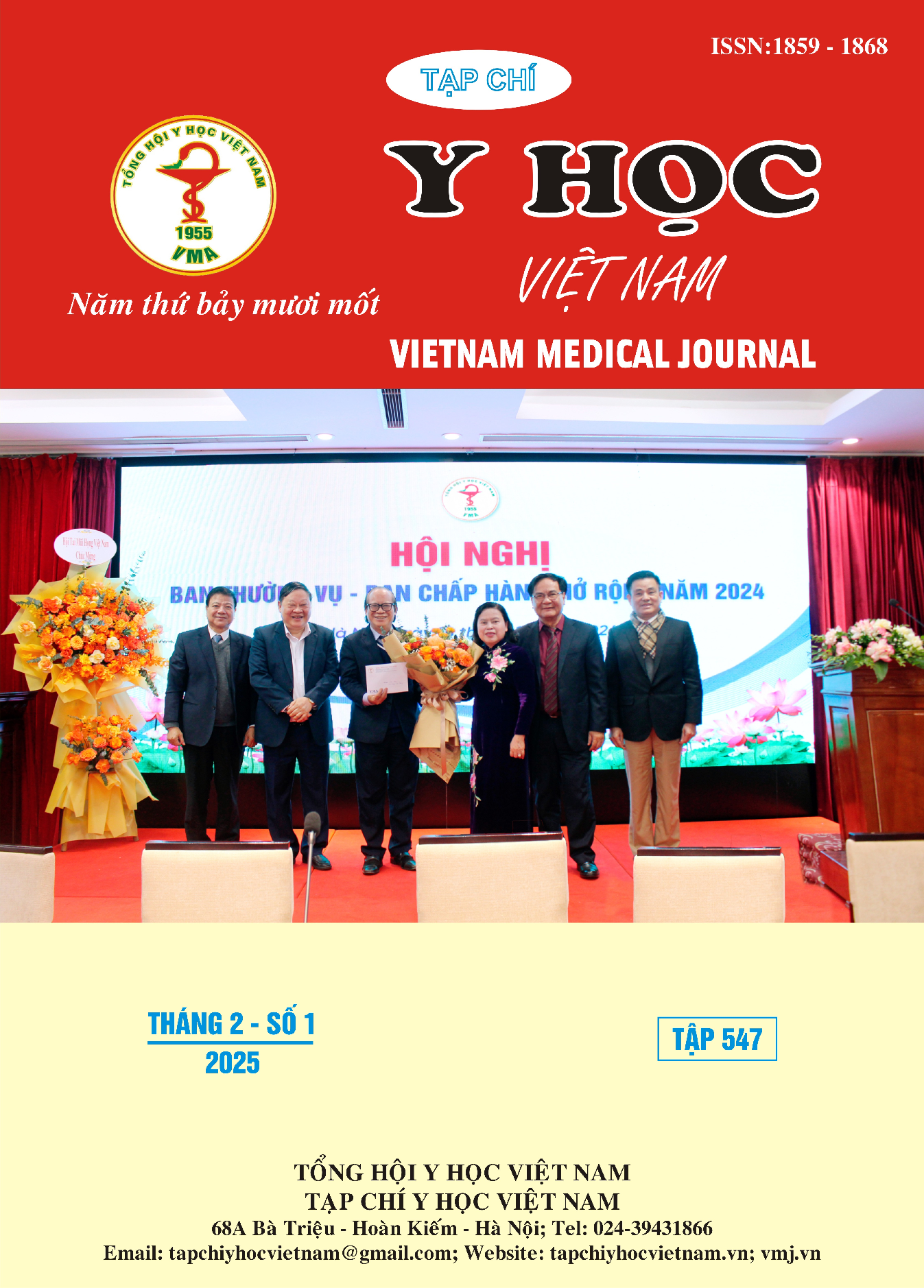AXILLARY LYMPH NODE METASTASIS ASSESSMENT AND RELATED FACTORS IN STAGE I-IIIA BREAST CANCER PATIENTS UNDERGOING SURGERY AT BACH MAI HOSPITAL
Main Article Content
Abstract
Objective: To assess axillary lymph node metastasis and identify associated prognostic factors in patients with stage I-IIIA breast cancer who underwent surgery at Bach Mai Hospital. Materials and Methods: This retrospective, cross-sectional study included 37 patients with stage I-IIIA breast cancer who underwent either total mastectomy or breast-conserving surgery with axillary lymph node dissection at Bach Mai Hospital between January 2021 and January 2024. Results: Most of the study participants were aged ≥ 40 years (83.7%). Tumor size were predominantly at T1 or T2 stages (94.6%), located in the upper outer quadrant (67.6%). In most cases, fewer than 10 lymph nodes were removed post-surgery (54.0%). The most common histological type was invasive carcinoma of no special type (NST) (89.2%), with the majority graded at histological grade II (70.2%). Most tumors exhibited no vascular, lymphatic, or neural invasion (90.9%, 78.4%, and 95.5%, respectively). Estrogen receptor positivity (ER+) was present in 67.6% of cases, progesterone receptor positivity (PR+) in 64.9%, and HER2 overexpression in 43.2%, with a high Ki67 index observed in 59.5% of cases. The axillary lymph node metastasis rate was 43.0%. Clinical assessment of axillary lymph nodes demonstrated low sensitivity and specificity, with a high false-negative rate. Tumor size was identified as a significant factor affecting axillary lymph node metastasis, with a p-value of <0.05. Conclusion: The rate of axillary lymph node metastasis in stage I-IIIA breast cancer patients was 43.0%, with 24.3% of the patients having metastasis in 1-3 lymph nodes, and 18.7% with metastasis in four or more nodes. Tumor size was a significant factor associated with axillary lymph node metastasis (p = 0.045).
Article Details
Keywords
breast cancer, axillary lymph nodes, lymph node metastasis, stage I-IIIA.
References
2. Kitajima M. Kitagawa Y. Fujii H. et al (2005). Credentialing of nuclear medicine physicians. surgeons and pathologists as a multidisciplinary team for selective sentinel lymphadenectomy. Cancer Treat Res. 127. 253–67.
3. Chua B. Ung O. Taylor R. et al (2001). Frequency and predictors of axillary lymph node metastases in invasive breast cancer. ANZ J Surg. 71. 723–8
4. Saleh S. Mona M and Mohammad E (2018). Frequency and Predictors of Axillary Lymph Node Metastases in Iranian Women with Early Breast Cancer. Asian Pac J Cancer Prev. 19(6): 1617–1620
5. Reger V, Beito H, Jolly P.C (1989), Factors affecting the incidence of lymph node metastases in small cancers of the breast, The American Journal of Surgery, 157 (5): 501-502.
6. Skinner KA, Lomis JT, Melvin et al (2001), Predicting axillary nodal positivity in 2282 patients with breast carcinoma, World Jour ofSurgery, 25(6): 767-72.
7. NCCN Clinical Practice Guidelines in Oncology (2024). Breast Cancer, V5.2024


